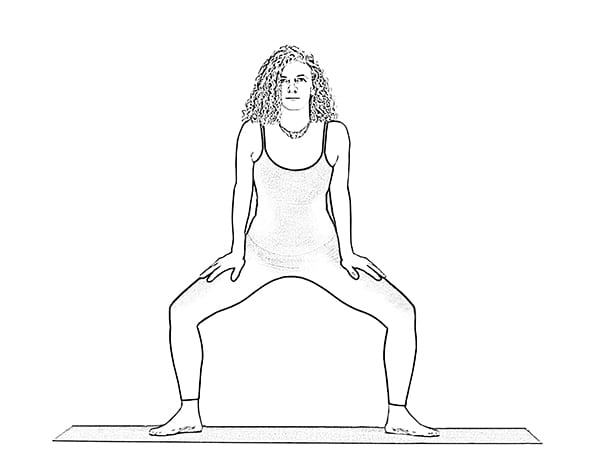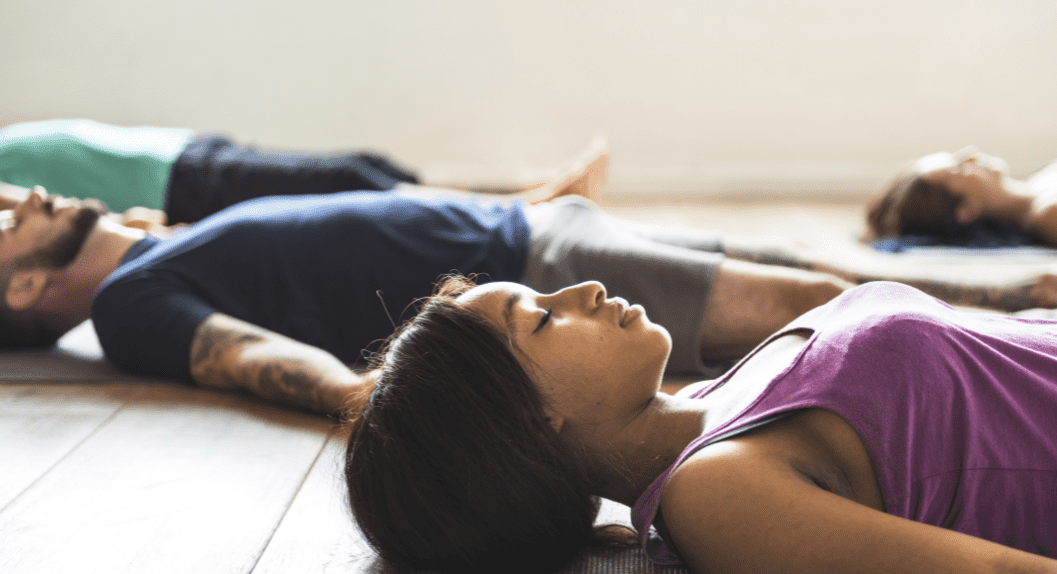Excerpted from Pelvic Liberation: Using Yoga, Self-Inquiry, and Breath Awareness for Pelvic Health, by Leslie Howard
Vertical structures like skyscrapers need to move; they need to be flexible to withstand high winds. “Why exactly is that?” I asked an architect friend. She explained that in a well-designed, stable structure, the different parts work together to balance out the pressure, whereas in a rigid structure a few elements bear all the stress, eventually weakening those elements.
The same principle applies to another vertical structure, our body. Ideally, our bodies are stable and flexible, but when the various parts and elements of our bodies are not optimally aligned, it shuts down some muscles and forces others to pick up the slack,
Good engineering and asana have a lot in common. In architecture, we check blueprints and do stress tests on the material. In Yoga, we look at our anatomy and try to figure out how to best strengthen our muscles. Remember, a tight muscle is not a strong muscle. It is an important distinction. We want to engage our glutes when needed but not clench our butts just for the heck of it.
There are three buttock muscles: gluteus maximus, gluteus medius, and gluteus minimus. One of their main functions is to stabilize your sacrum. They also balance and work against the pelvic floor. Two of the pelvic floor muscles attach to the anterior (front) side of the sacrum and pull it forward. Your buttocks muscles attach to the posterior side of the sacrum and make sure that the pelvic floor muscles don’t pull the sacrum into too much of a posterior or tucked position.
However, they won’t be able to do that if your glutes have forgotten their job. This situation is no better if you are a perpetual butt clencher. In that instance, it may seem like the glutes are doing their job, but in reality, they are failing to balance the pull of the pelvic floor muscles and may even exacerbate pelvic floor tightness.
The gluteus muscles (commonly known as the butt) counterbalance the pelvic floor. If the pelvic floor muscles are short and weak, the gluteus muscles tend to be short and weak. If the glutes are overdeveloped, they can pull the sacrum too far back.
Of the three butt muscles, the gluteus maximus, the largest and outermost one, gets the most hype. The maximus is responsible for hip extension (think the back leg when walking) and helps take the thighbone into external rotation.
Then there is the gluteus medius; its main function is to stabilize the femur bone in the socket, particularly when we are weight bearing (think of poses like tree pose, vrksasana). The gluteus medius prevents us from falling over when we are walking. Finally, the gluteus minimus helps turn the femur inward and assists in flexion of the hip (think walking up stairs).
Let’s look at mountain pose, tadasana. Bring your weight over the heels, so that the “eyeball” of the perineum is looking down and toward your heels. The quads should engage but not overgrip. The butt should have tone, but should not look and feel shrink-wrapped. The pelvis and lumbar spine should be in neutral, no tucking or untucking. Place your hands on your glutes and see what happens when you begin to tuck your butt in this pose. If you tilt too much posteriorly (tail under), the butt shuts down and the hamstrings have to take over. This is how many of us live, in a permanent tuck. We tuck when sitting, we tuck when standing, and many of us have even managed to refine the art of tucking while walking.
When we step forward (before the foot reaches the floor), our back leg buttock should be actively stabilizing us. When the front foot then hits the ground, our back leg buttock should fire to give us a push forward. Most people throw their front leg forward so that it is forced to catch the weight of the body, and then pull the hind leg after. This puts a lot of undue pressure on our hip sockets.

Goddess Pose
Many of us have short hip extensors (what we call the “groin area” in Yoga) from too much sitting, and we have weak glutes, which are no longer pushing us forward. In a healthy body, the pelvic floor muscles and the gluteus maximus move synergistically in opposite directions when walking. The pelvic floor lifts up as we take a step, and the gluteus maximus engages to extend the leg backward.
It is important that we maintain this synergy and practice engaging the buttocks in poses like goddess (above) and chair pose, utkatasana.
If the muscles in our butts are not working properly, this indicates that the front of the hip is really tight and short, which can in turn seriously compromise your ability to move. Nonworking butts can also contribute to tight lumbar muscles, which may lead to, among other things, posture problems or low back pain.



